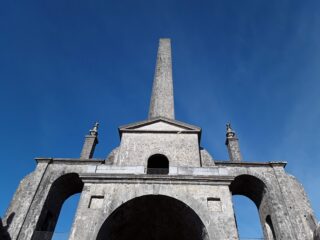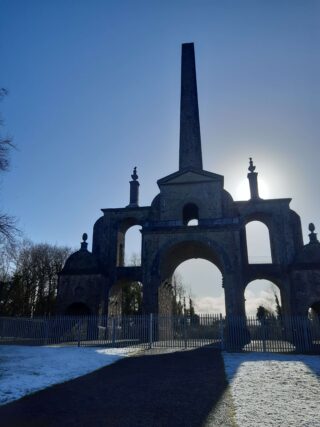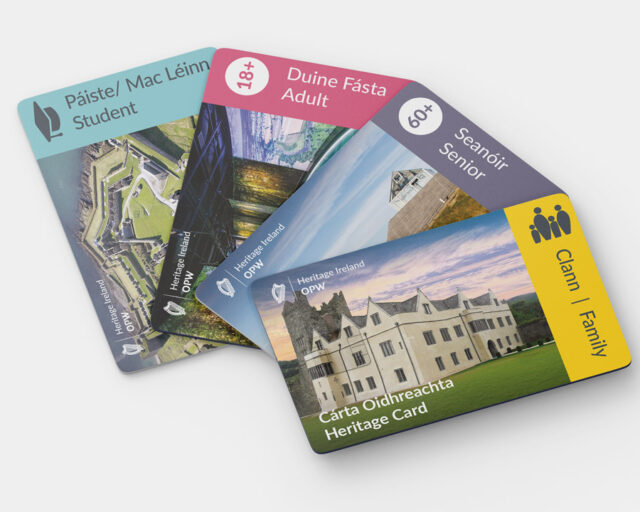Notice
Conolly Folly is a state-owned National Monument in the care of the Office of Public Works
WARNING: It should be noted that these sites are unguided and a level of care and caution should be maintained during all stages of your visit. The Office Of Public Works (OPW) will not be held responsible for any damages, injuries, or losses that occur
Conolly Folly
At 140 feet high, Conolly Folly is a decorative structure marking the back grounds of the Castletown Estate in Co. Kildare.
The monument is named after William Conolly, who was twice elected as Speaker of the House of Commons in Ireland. Conolly was well-known in Kildare, as he bought up a lot of the land and estates in the area, including Castletown Estate in 1709, and Leixlip Manor in 1728.
Conolly died in 1729, and the Folly was commissioned by his wife Katherine in 1740, both as a memorial to her husband, and as employment for the poor in Celbridge during the Famine of 1740-41.
Follies were often ornamental structures that adorned the landscape they were situated in. Designed by the architect Richard Cassels (or Castle), Conolly Folly is made up of multiple arches with pineapple and eagle decorations, and a large obelisk pillar in the centre. A pineapple was often said to represent money and affluence, while eagles usually symbolised strength and power.
The Folly is also very much connected with the Irish Georgian Society, which was established in 1958.
Their ethos is about preserving the Georgian architecture in Ireland, a task that first began in 1962 with their restoration of Conolly Folly. It is for this reason that the Folly is the logo of the IGS still to this day.
The Society’s co-founder, Mariga Guinness, was buried under the central arch in 1989.
Protect our Past - Click here to read about the importance of protecting our country’s unique heritage sites
This national monument is protected in accordance with the National Monuments Acts 1930 to 2014
Gallery
Nearby sites to visit
Maynooth Castle
A glimpse of life in a Norman fortress
Approx. 2.6 km from Conolly Folly
Castletown House and Parklands
Ireland’s first and finest Palladian mansion
Approx. 3.0 km from Conolly Folly
Farmleigh House and Gardens
An eclectic Edwardian mansion and the Irish state guesthouse
Approx. 13.3 km from Conolly Folly
Phoenix Park Visitor Centre and Ashtown Castle
A rediscovered medieval gem and its demesne
Approx. 15.2 km from Conolly Folly
Phoenix Park and Biodiversity Centre
Where Dublin goes to breathe
Approx. 15.3 km from Conolly Folly
Áras an Uachtaráin
A taste of presidential elegance
Approx. 16.0 km from Conolly Folly




